
Close to a decade ago, off-road bush tracks were mainly illuminated with HID and halogen technology. Fast-forward and LED technology has become all the rage, and for good reason.
Not only do LEDs provide a wider, brighter spread of light, they’re also beginning to use less power, and they last for yonks. Light-emitting diodes (LEDs) have, in fact, been around for more than 50 years, but the development and evolution of LEDs in recent years has seen it surge into the catalogues of many respected 4x4 aftermarket brands.
However, with surging popularity come cheaper imported products, so the old adage ‘you get what you pay for’ rings truer than ever. Below, we've listed some of the best products on sale in Australia, so that you don't end up with a dodgy unit that'll leave you in the darkness.
JUMP AHEAD
- Lazer Sentinel Elite
- Narva Ultima 215 MK2
- Lightforce HTX Hybrid and Genesis
- Great Whites Attack LED bar
- Ultra Vision Nitro Maxx
- TJM Narva Ultima 215
- Ironman 4x4 driving light range
- Dobinsons Zenith
- ARB Intensity
- Bushranger Night Hawk Variable
- Stedi Type-X
Lazer Sentinel Elite
The Sentinel nine-inch round lamps embody Lazer Lamps' commitment to premium design, superior lighting and exceptional build quality.
The Sentinel Elite, featuring a sleek black appearance, houses 32 high-power LEDs to deliver strong lighting performance. Emitting 15,232 raw lumens and reaching 742m with 1 lux, its 52-degree horizontal spread ensures outstanding visibility on the road or track, particularly in mid- to long-range scenarios.
Crafted with meticulous attention to detail, the Sentinel Elite's black variant boasts a stealthy aesthetic achieved through black printed circuit boards and bezels with hexagonal design accents. Its diecast aluminium mounting bracket, treated with automotive-grade processes, offers a premium satin black finish, ensuring both visual appeal and durability against corrosion.
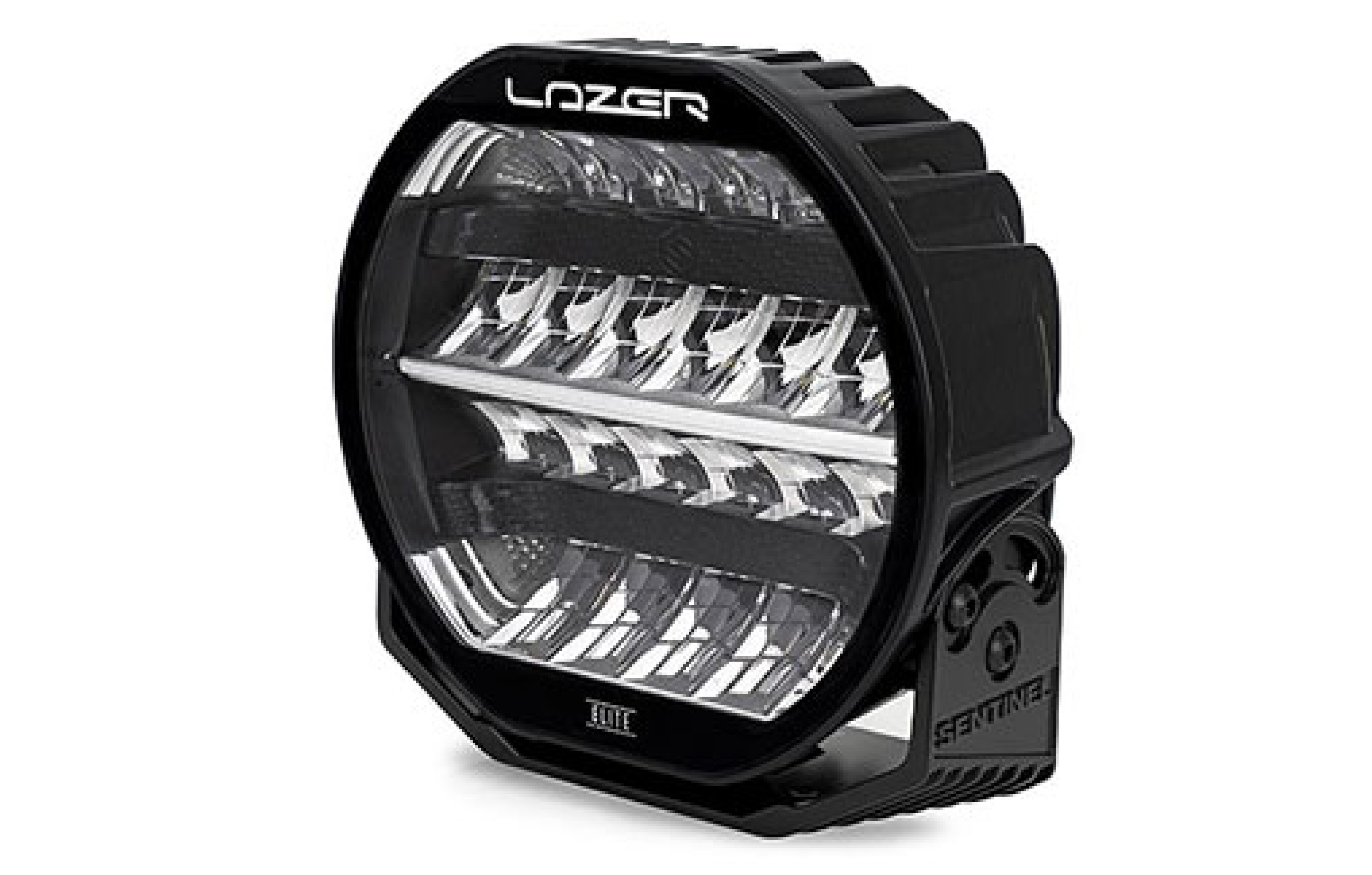
Designed, engineered, and manufactured in the UK, key features include ultra-reflective optics, integrated white and amber backlight options (white approved for on-road use), electronic thermal management for LED longevity, and unbreakable polycarbonate lenses.
Each lamp comes with a five-year warranty and is IP68 watertight, submersible up to 1.5m for 30 minutes. Additionally, they feature over-voltage and reverse polarity protection, ensuring reliability in various conditions. Supplied with pre-wired Superseal connectors, the Sentinel lamps offer easy installation and are compatible with optional accessories like lens covers and anti-theft fasteners.
The Sentinel Elite combines advanced technology, striking design, and robust construction for unrivalled durability in any environment.
Pros
- Exceptional lighting performance
- Premium build quality
- Sleek aesthetics
Cons
- High price point
- Limited colour range
Narva Ultima 215 MK2
Narva designs and develops its LED driving light range in-house, including its Ultima 215 MK2 LED. The 215 MK2 utilises 33 x 5W Osram LEDs for 165W of light at a claimed 21,780 raw lumens, which Narva says is 30 per cent brighter than the original Ultima 215.
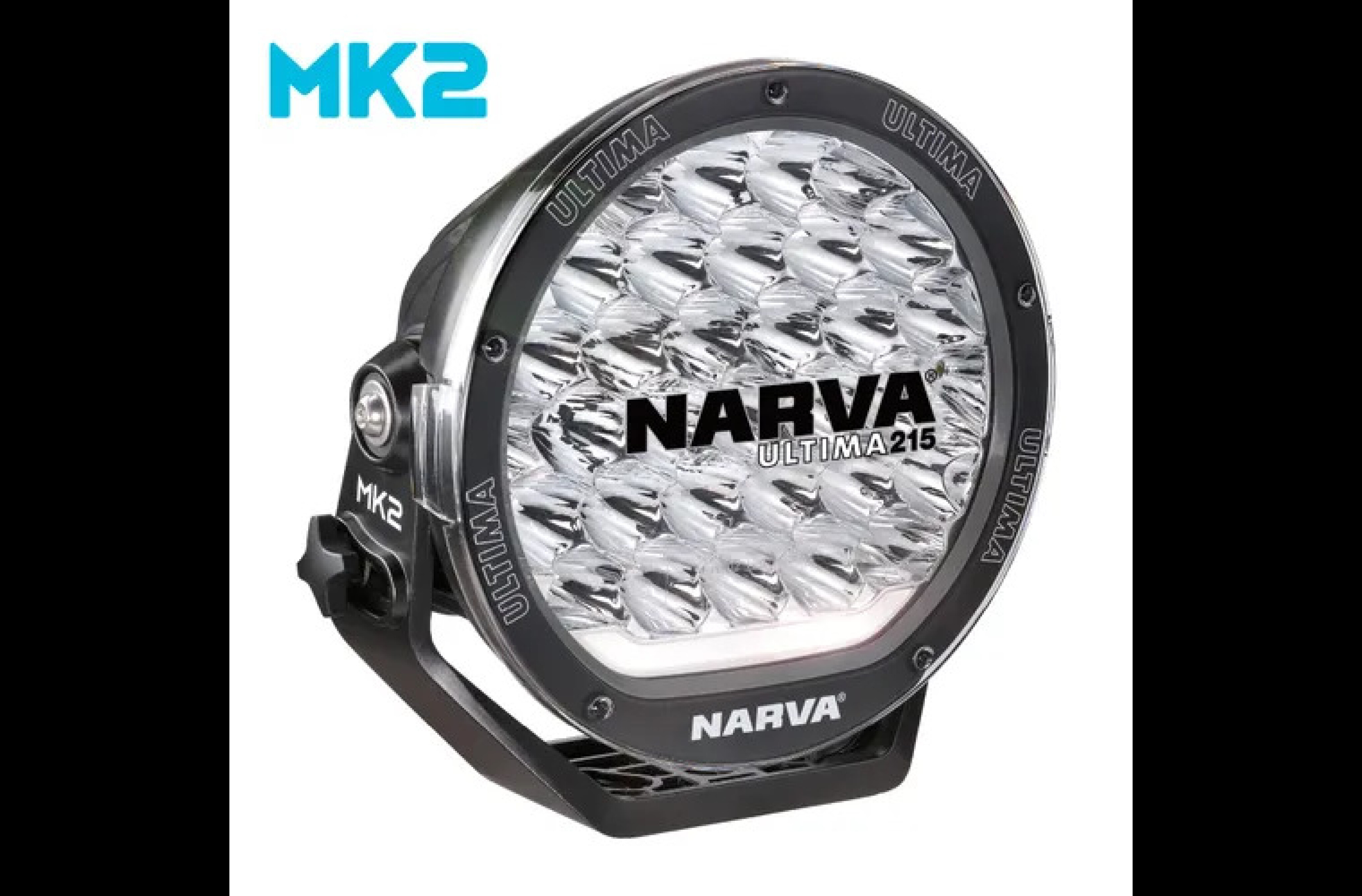
The LED chip sits within a die-cast housing supported by a tough stainless-steel mounting bracket, locked down via three stainless-steel bolts with nyloc nuts. The 3.2kg lamp is IP66 and IP67 rated and features Narva’s Active Thermal Management System, an integrated DT Connector, a Nitto breather vent and a polycarbonate, hard-coated lens and lens cover.
Pros
- We’ve tested them on multiple vehicles without any reliability issues
- Bright output
- Choice of external colour rings
Cons
- Expensive, but you pay for quality
Lightforce HTX Hybrid and Genesis
All round driving lights, including the Genesis and HTX Hybrid, are designed, manufactured and tested in-house at Lightforce’s Adelaide HQ.
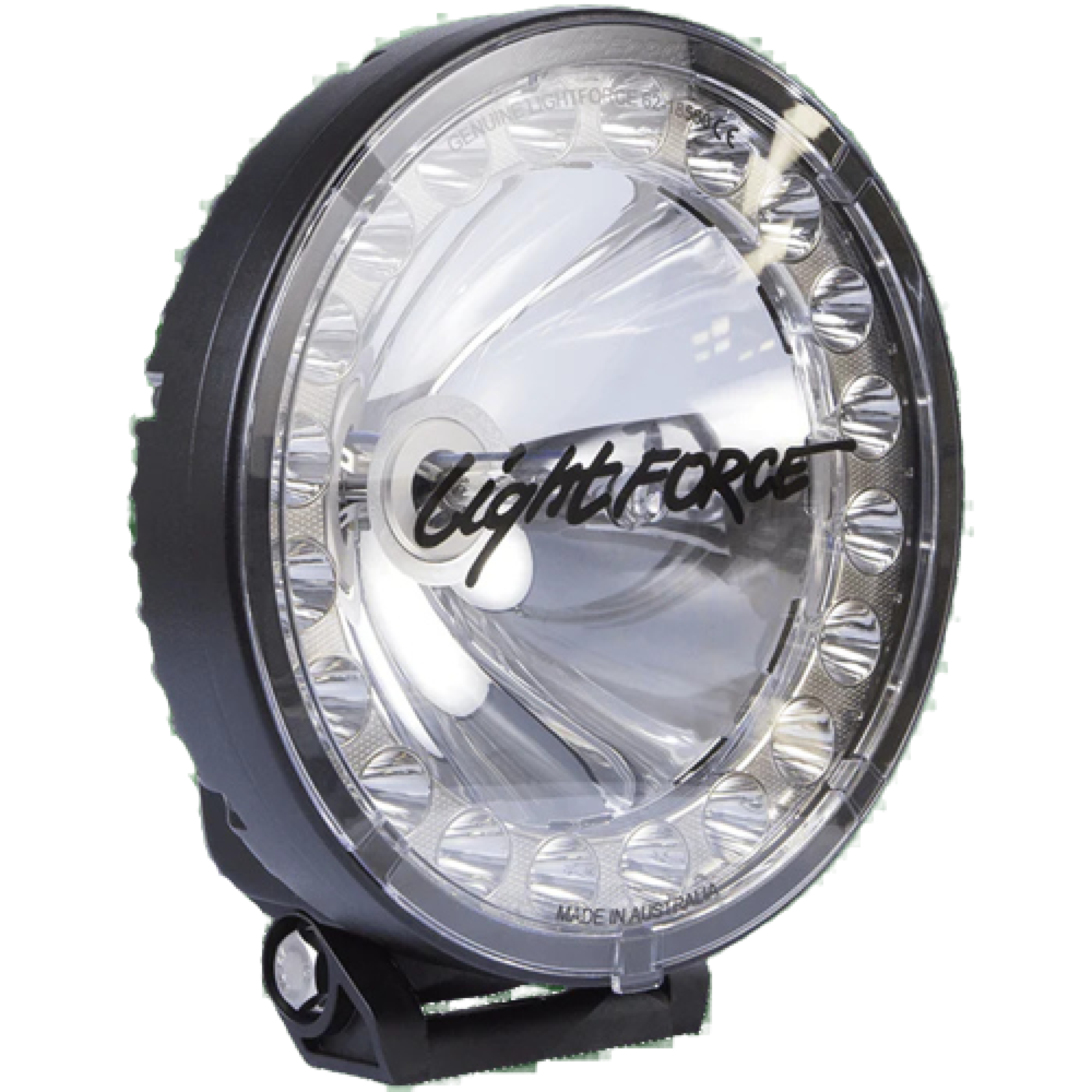
The LED bars are designed in Australia but made in China to strict specifications. The 75W Venom LED has a 150mm diameter and can light up 1 Lux at 850m; while the 140W Genesis LED reaches a distance of 1 Lux at 1053m. Marketing manager Mark Gamtcheff told us: "All our lights go through the Lightforce Design Verification Plan & Report testing procedure. All photometric, ingress protection and CISPR testing is independently third-party verified. All claims on the box are independently tested.”
Pros
- Designed for Aussie conditions
- Long history of building quality lights
Cons
- Not cheap to purchase
Great Whites Attack LED bar
Great Whites are manufactured abroad, but are designed to suit Australia’s conditions, and all Great Whites are comprehensively tested in Australia before going on sale.
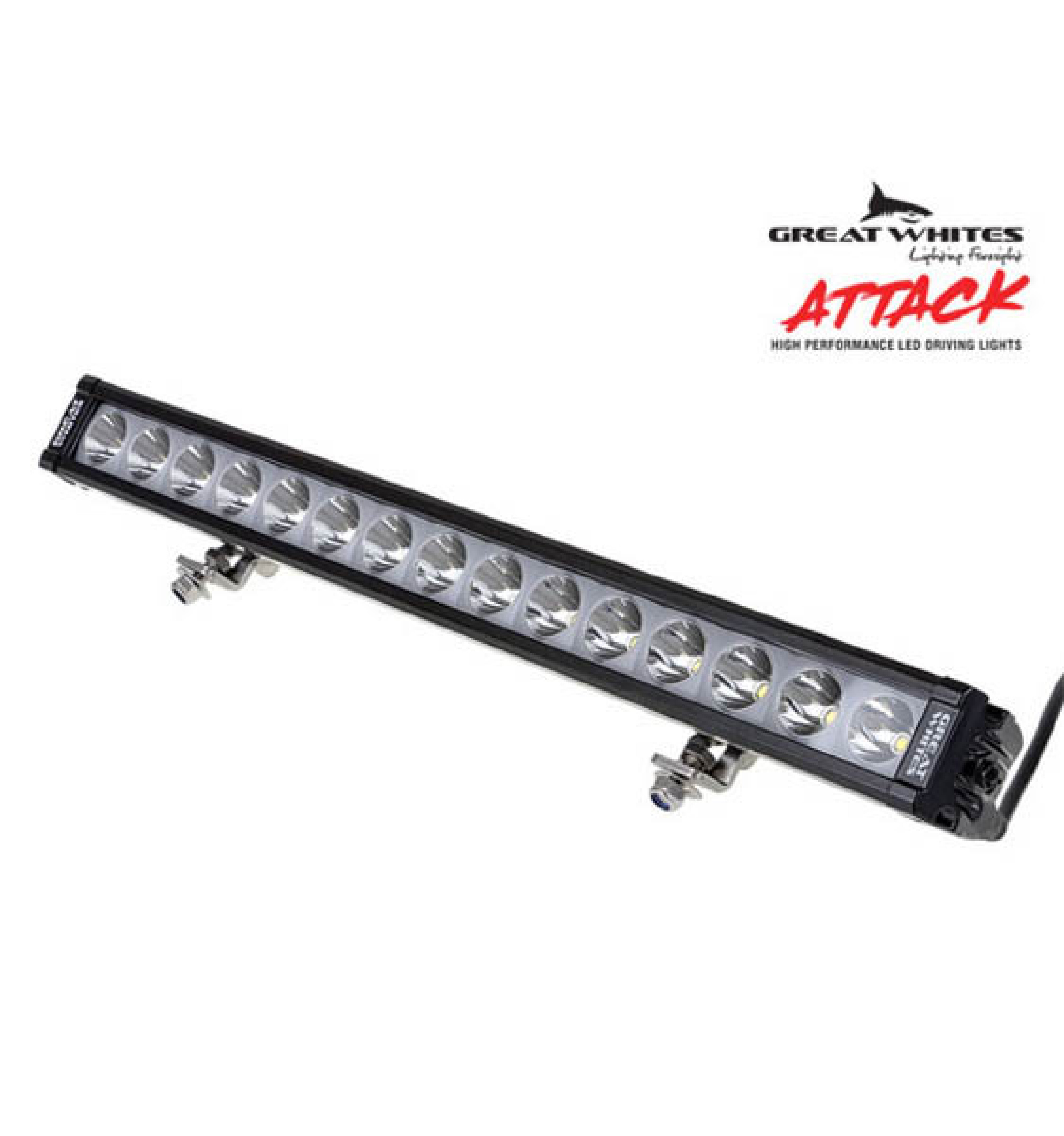
“Once we have samples in Australia, we then proceed with real-world testing on heavy and light vehicles as well as in-house environmental testing,” said Great Whites’ Steve Mitchell. “All (Attack) lights are equipped with polycarbonate lenses, environmentally sealed fly leads with genuine Deutsch plugs and virtually unbreakable bracketry.”
Pros
- Made for the trucking industry, so you know they are tough
- Designed for Aussie conditions
Cons
- Heavy
- Large size could create fitment issues
Ultra Vision Nitro Maxx
All of Ultra Vision’s electronics are designed and manufactured in Australia, and prototypes are checked in the test facility and then road-tested to ensure they perform in harsh environments.
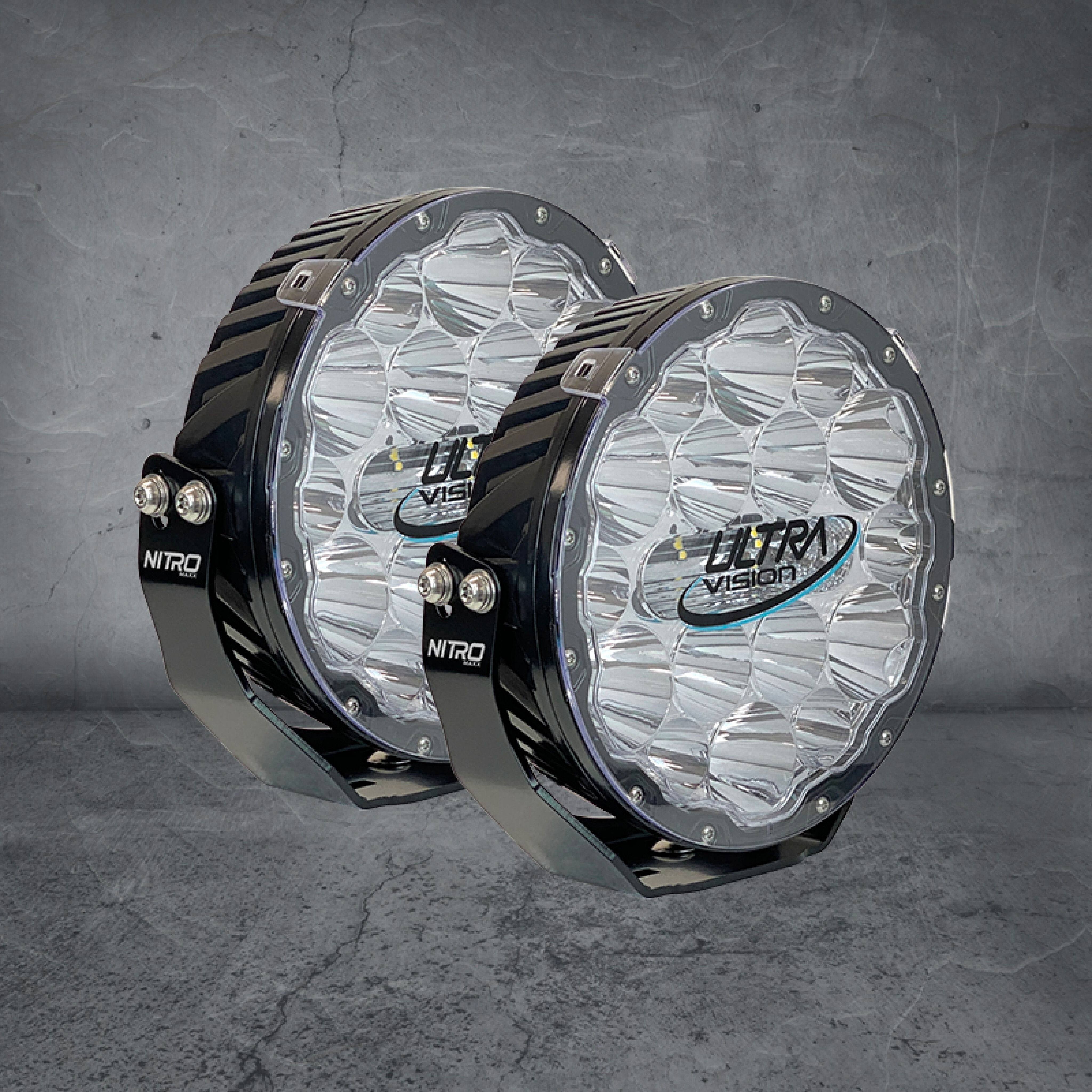
“Ultra Vision has focused their efforts on manufacturing in Australia for the past four years and currently over 90 per cent of the range is produced locally,” said Ultra Vision’s Brett Tunley. “By keeping up to date with manufacturing techniques and equipment, along with constant investment in innovation and R&D, Ultra Vision has proved that we can produce products that are top performers, compared to anything available internationally.”
Ultra Vision uses powder-coated aluminium for the housings, polycarbonate for lenses and lens covers, and stainless steel for brackets and fixings. Tests include submersion in water, various electrical and EMC checks, as well as performance at high temperatures to simulate idling with high beams (setting up camp).
Pros
- Australian made
- Amazing light output
- Options for colour temperature choices
Cons
- They are a premium product, therefore not cheap
TJM Narva Ultima 215
TJM recently released the TJM Narva Ultima 215 driving lights, which are designed and engineered in Australia.

These lights are in effect exactly the same as the Narva Ultima 215s, save for the coloured ring and branding. The benefit is, TJM asks for less for a pair, and that includes the wiring harness. As such, the lights feature Cree XP-G2 chip technology, with an output of 8500 effective lumens and 165W of pure white light – to illuminate the track up to 900m ahead. Each light weighs 3.2kg and measures 215 x 235 x 112mm, and the units are IP66 and IP67 rated.
Pros
- Made by Narva
- Wiring loom included
Cons
- Yellow trim ring could be polarising
Ironman 4x4 driving light range
Ironman 4x4’s range of LED lighting solutions, including light bars and spotlights, utilise CREE technology for increased lifespan, improved light brightness and outstanding efficiency.
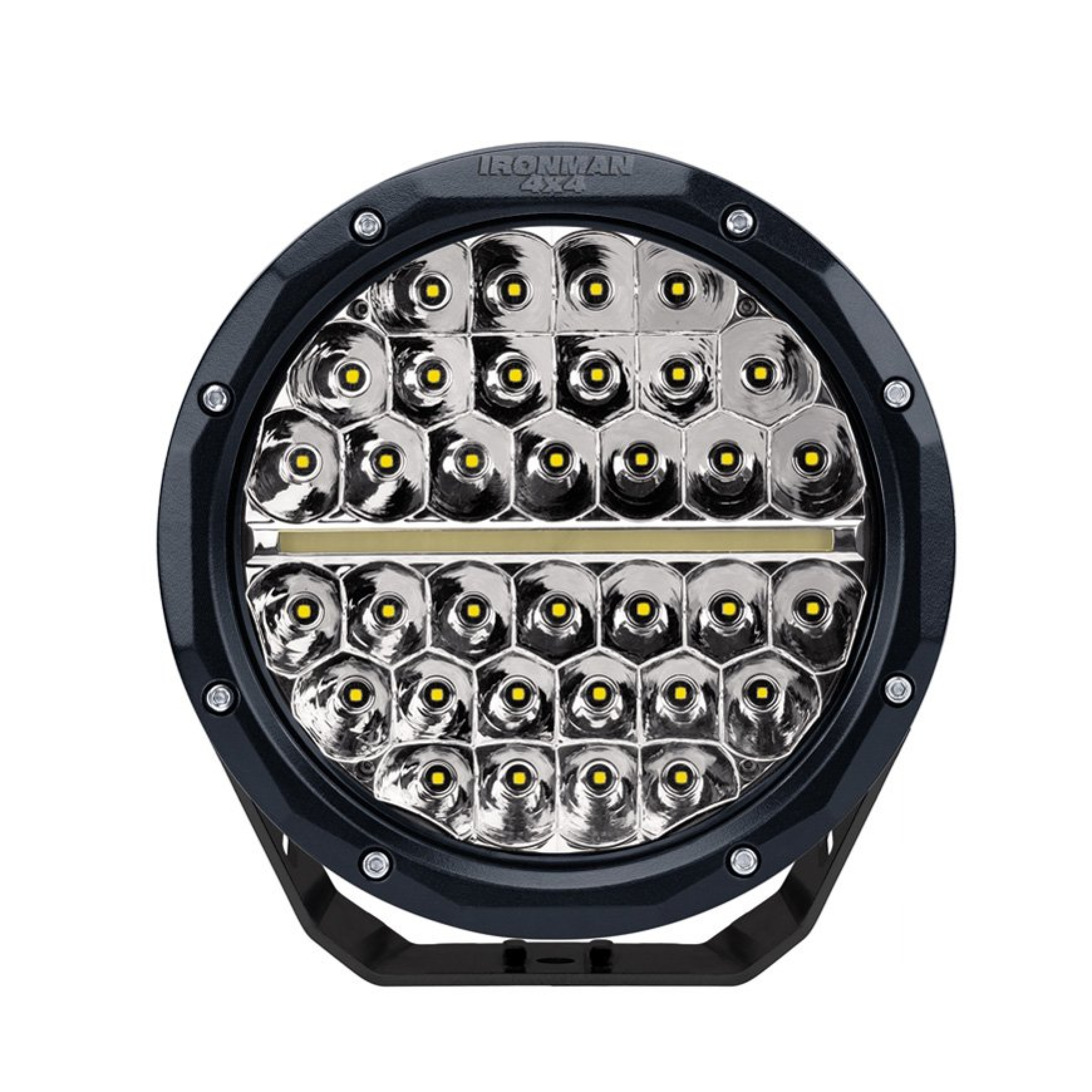
The Aussie brand’s spotlight range – 7-inch Blast Spot, 7-inch Blast Combo, 7-inch Comet, 9-inch Comet and 9-inch Meteor – are powder-coated and made out of die-cast alloy housings and feature polycarbonate lenses. They’re IP67 and IP69K rated, so you’ll have no issues attempting Cahills Crossing.
Pros
- Well-priced
- Excellent support network
- Good range of options
Cons
- Output figures aren’t the brightest on the market
Dobinsons Zenith
The Dobinsons Zenith 155W LED driving light is designed and tested in Australia.
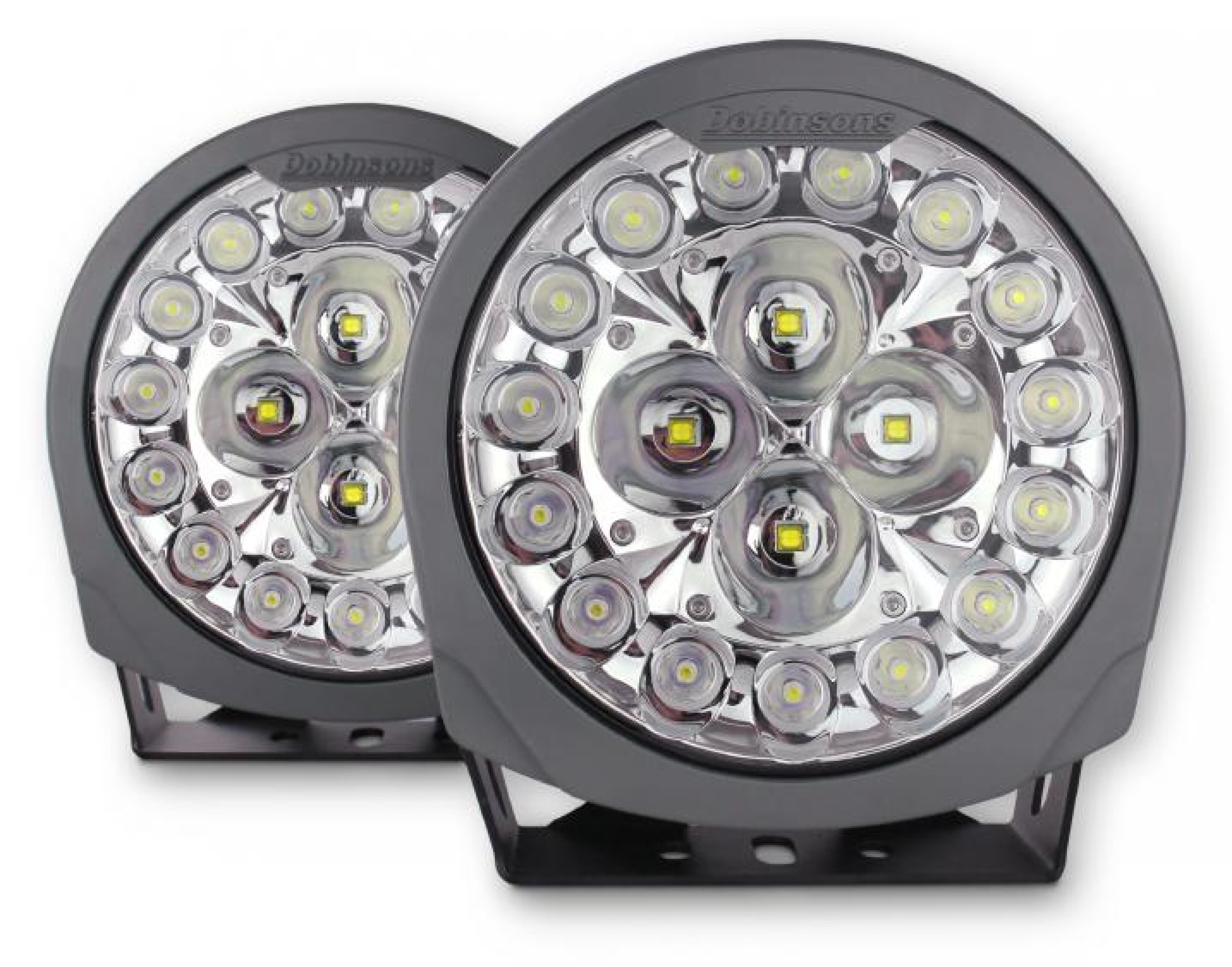
The 155W light features 4x20W extra deep dish long-distance LED chips and 15x5W spread LED chips, for a total of 12,700 raw lumens per light. The 8.25-inch multi-fin alloy housing combined with a heavy-duty steel mounting bracket and polycarbonate lens ensure the light will perform in harsh terrain. The unit has an IP68 water- and dust-proof rating.
Pros
- Unique design
- Good price point
Cons
- Not well-known as a lighting manufacturer
ARB Intensity
ARB’s Intensity LED light bar – combo and spot – uses the same patented lens/reflector technology as the existing Intensity lights.
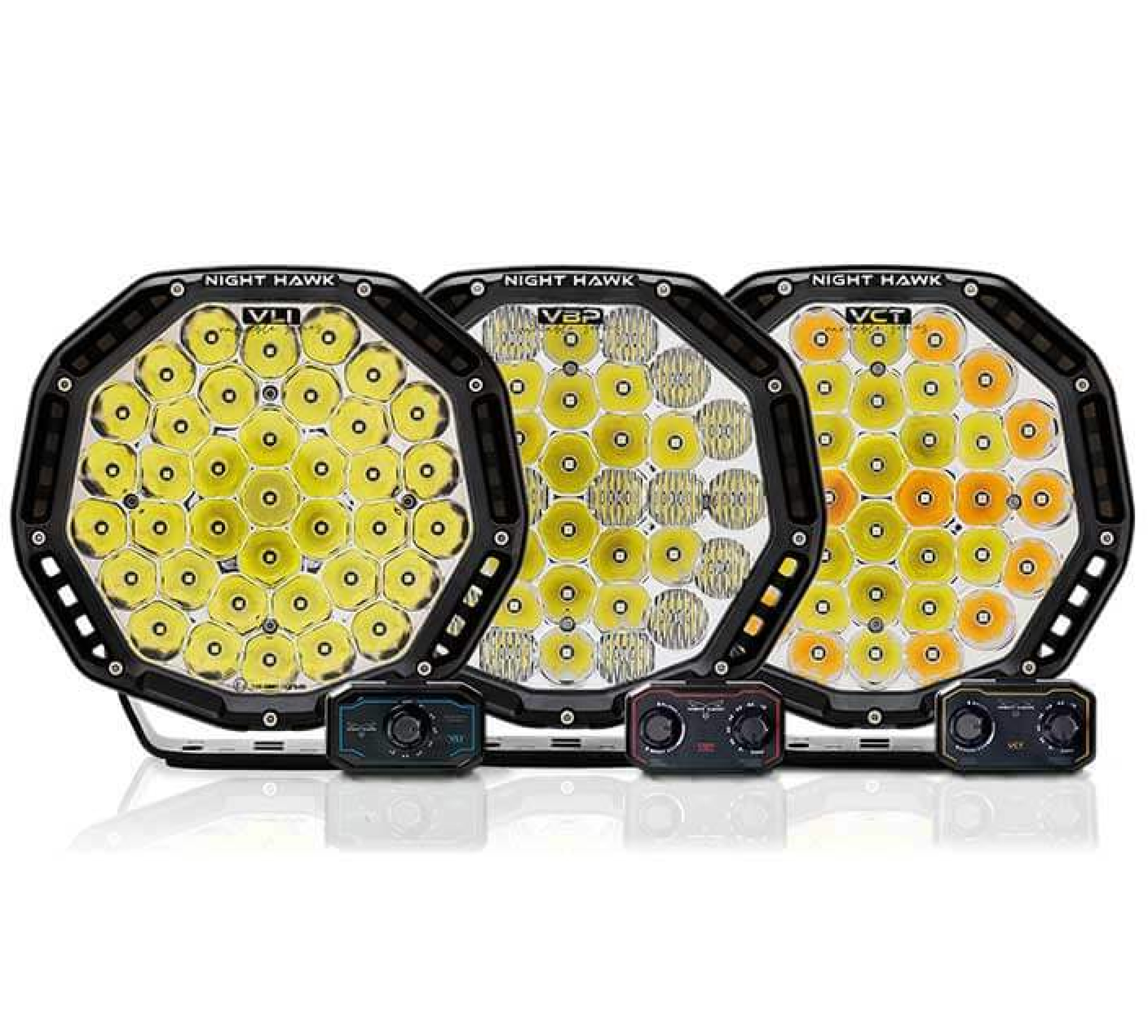
The unit features a polycarbonate lens; a powder-coated, extruded aluminium body with pressure die-cast end caps; and moulded polycarbonate covers, hard-coated for scratch and UV resistance. With 40 LEDs, the unit has a maximum power of 115W and pushes out 9200 raw lumens.
The Intensity AR32 V2 LED driving lights – available in spot and flood beams – feature 32 LEDs and are designed to withstand harsh corrugations. They’re also submersible to three metres. With 165W, the units have a maximum output of 20,000 raw lumens.
“The majority of LED driving lights use aluminium housing – light weight, excellent heat conductor – and polycarbonate lens – very strong, high resistance to stone chips and scratching,” Shannon Diedrich, ARB’s PR and comms co-ordinator, told us.
Pros
- The godfather of LED driving lights
- Rock solid design
- Excellent Australia-wide support network
Cons
- They are a premium product and priced accordingly
Bushranger Night Hawk Variable
Bushranger’s Night Hawk Variable series is all about providing options, with three different light options available in the range. The first being the original Variable Light Intensity (VLI).
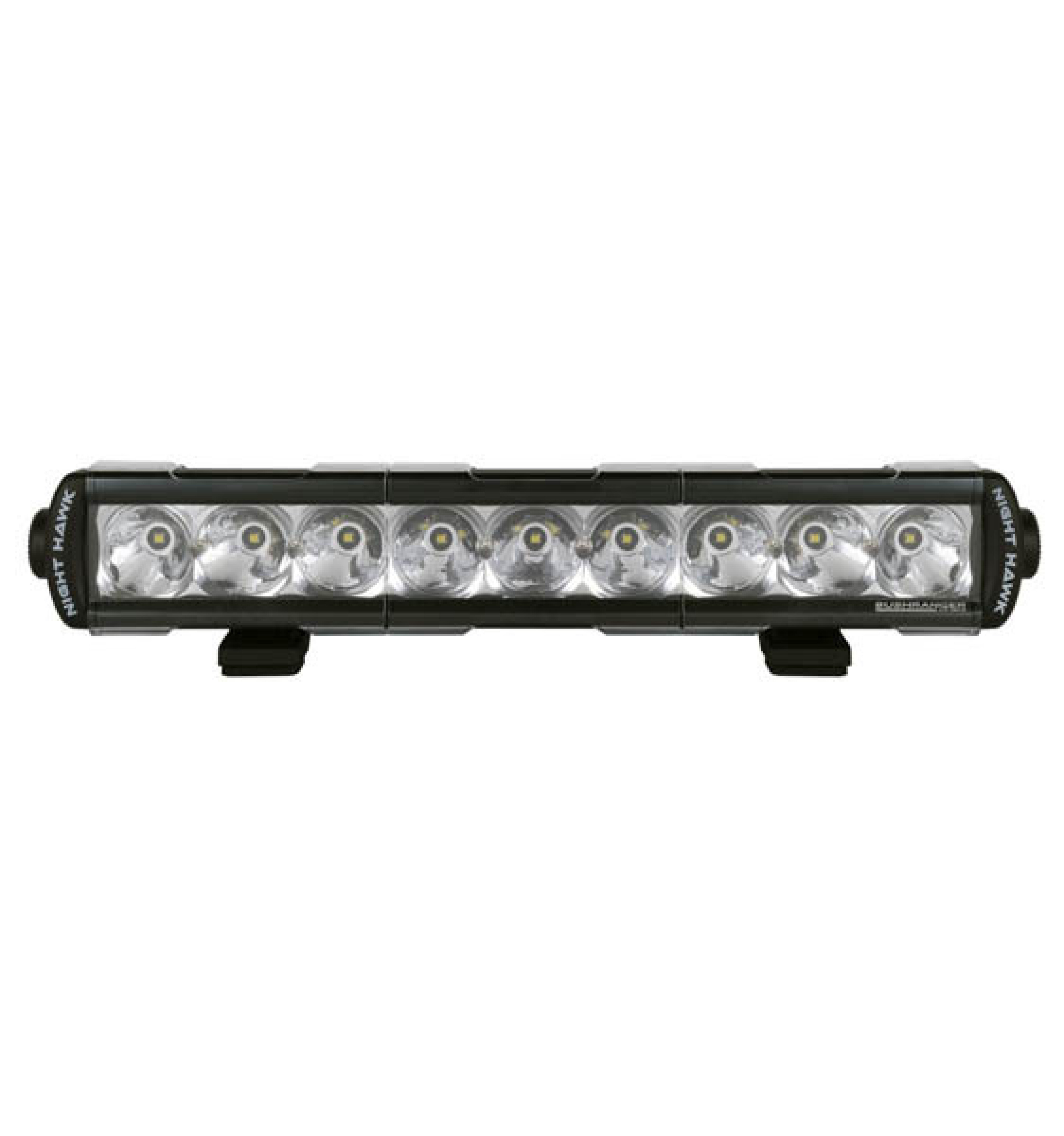
The VLI has the ability to change light intensity with the turn of a dial. This means you can adjust how bright the lights are, to best suit the conditions you are driving in. Next up in the Night Hawk Variable range is the Variable Colour Temperature or VCT for short. Not only can you adjust the intensity output of this light, you can also change the colour temperature of the light output.
There are eight colour settings to choose from, ranging from a warm 300K right up to a bright white 6000K, making for a versatile light in a range of conditions. The third light offered by Bushranger in the Variable Series is the Variable Beam Pattern (VBP), which has been designed to allow you to adjust the beam pattern from full spot pattern to full flood beam. The VBP series also has the ability for you to control the light output, from low to high with eight stages of adjustment.
Pros
- Unique shape for additional bullbar clearance
- Wide range of options
- Long warranty
Cons
- Almost too many options
- You need space to mount the controller
Stedi Type-X
There are three LED driving lights in the Stedi X-range, but Stedi also offers a wide variety of LED lighting including work lights and light bars.
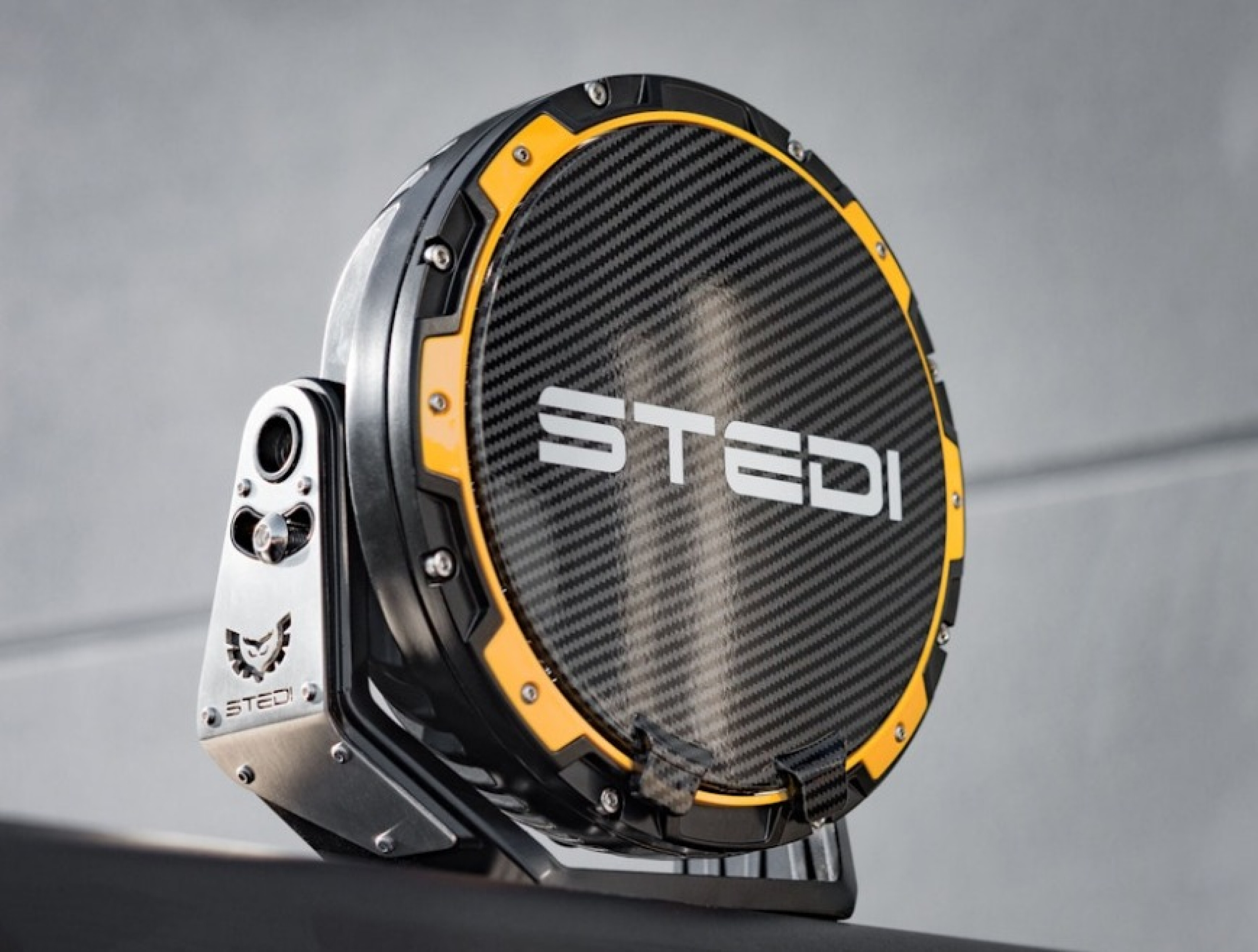
In the Type-X portfolio, there is the top-of-the-line Type-X Pro, the 8.5-inch Type-X Sport and 7-inch Type-X Sport. As the names suggest, the 8.5-inch Type-X Sport and 7-inch Type-X Sport are either 8.5-inch or 7-inch in size so you can best pick the light that suits your available fitment space.
The Type-X Pro offers a claimed colour temperature of 5700K, an amp draw of 10.4amp at 13.2V and raw-lumen output of 26,270 per pair. Looking at the 8.5-inch Type-X it also has a claimed colour temperature of 5700K, however uses less power at 9.8amp at 13.2V and a raw-lumen output claim of 20,780 per pair. The smaller 7-inch Type-X uses a claimed 6.4amp at 13.2V, shares the 5700K colour temperature and a claimed output of 16,640 raw lumens per pair.
Pros
- Well-priced
- Solid performance
- Five-year warranty
Cons
- Looks could be a bit out there for some
- Only available in 5700K colour temperature
A buyers' guide to LED driving lights
Fitting driving lights, a light bar or a set of spotties to the front of a 4x4 is essential for anyone wishing to avoid kamikaze kangaroos and wayward wombats once the sun has disappeared, and there are now a plethora of options available to stick to your roof racks or on your bullbar.
There’s no better option than a set of LEDs, with the technology evolving to a point where manufacturers have optimised performance, with units now packing more lumens into even smaller packages.
Jo Banks, Narva’s production development manager, explained: “There have been many areas of improvement over the last few years, the biggest being lumen output and package size. The lumen output per Watt of power has been improving steadily, so now we get more lumens (or volume of light) per Watt of LED.”
Banks also explained that LEDs are now smaller but no less effective. “We now get five Watts in a three-watt chip, 10 Watts in five-watt chip package, and so on.” This means makers can now utilise the same lamp design but adopt a more powerful LED to maximise beam output.
“As a result of the smaller LED chips, lumen intensity (brightness per mm of LED surface) has increased considerably. This makes it possible to focus more for a much longer beam,” Banks added.
Mark Gamtcheff, from Lightforce Australia, explained another benefit of LED technology is the increased thermal efficiency of modern driving lights, which reduces heat and improves output.
“Lightforce has taken advantage of these improvements in LED technology to design lights to be slimmer and lighter, as a smaller heat sink is required to dissipate the heat created,” he said.
“Lightforce has also been able to achieve a warmer colour temperature of 5000 Kelvin, lower than many other LED lights, reducing glare. This reduces eye fatigue and provides more clarity to objects you see on the road.”
Steve Mitchell, lighting specialist at Great Whites, then added: “With LED driving lights you have the ability to achieve a higher Kelvin temperature rating, which allows for a whiter and brighter light output. This helps to reduce strain on the driver’s eyes and can help to combat drowsiness when driving.”
Due to the ongoing development, manufacturers are now finding ways to maintain optimal efficiency yet reduce the weight of the units significantly. Ultra Vision’s Brett Tunley explained: “With the LEDs becoming more efficient, we have been able to reduce the weight significantly.”
He then discussed how light output has developed substantially: “Getting a distance of 1.2km with a 140W lamp wasn’t on the horizon three years ago.”
ARB’s PR and communications co-ordinator, Shannon Diedrich, added the “use of reflectors to aim the light in the direction required (spot vs flood pattern)” has also improved. In addition, there’s now a wide range of LED construction types available to suit a variety of different tasks.
For example, some LEDs produce a greater lumen output but have less concentrated light (intensity) and are suitable as wide-beam driving or bar lights; while others have high intensity, making them great for applications requiring high focus – spot beams and long-range driving lights.
“These improvements in LED design and performance make it possible to build lights with almost any beam pattern and with very high lumen outputs. It is also continuing to reduce the cost of LED lights, especially in the dollars versus output,” Banks said.
In today’s market, punters can get better bang for their hard-earned, however that doesn’t mean quality-made units are cheap, but prices are lowering due to competition and increased demand.
Gamtcheff agreed that the cost of LEDs has softened in recent years, with a huge range of LED lights available in different configurations and of different quality.
“In general, you get what you pay for,” he added. “Pay a bit more for Lightforce and you get the benefit of our expertise built into every light.
“Knowledge in applying high-tech electronics to make them run more efficiently has helped us lead the way in the LED driving-light market. We now have an LED product in the Genesis which is capable of producing 1 Lux at over 1km beam distance.”
Steve Mitchell from Great Whites added: “Quality products will always come at a price, and driving lights are no exception. Great Whites are renowned for high-quality construction and making it through some of the world’s harshest conditions.”
Drawbacks
As well as a lowering-but-still-pricey cost, a drawback of LEDs is that, due to an increase of power, current draw can be excessive. “The larger the LED (Wattage), the likelihood of more power being consumed,” said ARB’s Shannon Diedrich.
But that’s an easy fix, according to Jo Banks: “That’s not hard to fix with a suitable quality harness. This is one of the reasons Narva offers a harness specially designed to power our 215 LED lights.”
Another issue is the Colour Rendering Index of an LED. Lightforce’s Mark Gamtcheff said: “This means you will find a saturated market of underperforming LED product. (So) it’s important that distance and colour temperature are engineered into the design of LEDs.”
As with most aftermarket solutions, an unfortunate but all too common dilemma is brands that cut costs during the manufacturing process – for example, by minimising heat sinks and fins on the light housing.
“Unfortunately, these alterations result in inefficiency in heat dissipation when the vehicle is not in motion, increasing the overall temperature of the light which can lead to premature failure of LEDs. If you run your finger over the fins of a driving light and it sounds tinny, the light is likely a victim of this cost-cutting approach,” said Great Whites’ Steve Mitchell.
Another problem with LED tech is when a light blows. If a HID or halogen bulb blows it’s an easy fix, but if a light in an LED blows, then replacing it is a tedious process. “If an LED blows, the lamp has to be replaced rather than just a bulb,” Ultra Vision’s Brett Tunley explained.
Off-road we go
Heading to a remote campsite is more often than not going to involve treacherous, gnarly terrain, and it’s a reason why a solid, well-constructed LED is of vital importance.
“The greatest benefit of the LED is its durability. One of the main killers of HID and halogen lights is vibration. Driving on corrugated and poor quality roads can drastically reduce the lifespan of these lights, which, when fitted to a 4x4 can present a pretty serious problem,” said Steve Mitchell from Great Whites.
“Good quality LED driving lights are designed to withstand vibration and high-impact scenarios.
“Great Whites were originally designed for the trucking market and as such are built to handle some of the toughest conditions for extended periods of time.”
Ultra Vision’s Brett Tunley enforced that point: “Being a solid-state technology, the electronics don’t have issues with vibrations, like the old halogens. It is also more stable and long-lasting than the HID, which has proven temperamental.”
As well as the obvious benefits – a bright spread of light, long lifespan and reliability – LEDs provide instant bright light, as opposed to HIDs which, despite reaching huge distances with a penetrating beam, take time to warm up.
“That’s why Lightforce engineered the groundbreaking HTX hybrid, which combines the instant brightness of LEDs with the distance and colour temperature of HIDs,” Mark Gamtcheff said.
Life expectancy
It wasn’t all that long ago when traditional HID or halogen lights were guiding four-wheelers to their hidden overnight digs on dark, secluded tracks, but the progression of LEDs is due to many reasons, none more critical than longer life expectancy.
“Premium LEDs have an operating life of up 50,000 hours, so they may well outlast the rest of the lamp!” Narva’s Jo Banks explained. “(But) it is important to note that an LED will only achieve this impressive life if driven by quality electronics and its heat is correctly managed.
“With the cost of LEDs coming down, the driver and heat management are becoming a bigger factor, with some cheap lights taking a few shortcuts that can effect the life of the lamp.”
Mark Gamtcheff backed-up that figure: “The predicted life of an LED chip is 50,000 MBTF hours (Mean Time Between Failures), versus 2000 MBTF for a HID, or up to 1000 MTBF for a halogen globe.”
Just how popular?
LED technology may have evolved to fill a pocket left open by halogen and HID technology, but does this translate to higher sales?
“Here at Lightforce, we’ve found that our hybrid HTX, with the combination of both HID and LED technology, sells the best,” Gamtcheff told us. “Whilst the popularity of LED is definitely increasing, halogen and especially HID still have a strong market share.
“Halogen lights are competitively priced and retain a warmer colour temperature of about 3300 Kelvin, which some drivers prefer. HID lights will always produce the longest beams (over 1 lux at 2km with a Lightforce XGT), which some drivers value.
“LED, however, seems to be filling a gap in the market – whether it be a flood beam for broad close-range lighting, or a driving beam for forward lighting, LED is a technology that is growing in popularity.”
Great Whites’ Steve Mitchell told us that since the introduction of its first LED driving lights in March, 2012, the sales of HID and halogen lights have seen a steady decline in Australia. “This effect can be seen across the board from trucking and four-wheel drive applications, to work lights in the mining and industrial sectors,” he said.
Brett Tunley at Ultra Vision reckons, across the industry, HID and halogen sales have dropped 40 per cent per year for the past three years. “This seems to have levelled off now, but overall the market has expanded with many people buying light bars for smaller vehicles that would never have run halogens,” he told us.
DIY
All of the manufacturers agreed that fitting a set of lights is a pretty straightforward affair for those handy with tools, but it’s recommended that the average punter get the LEDs fitted by a qualified auto electrician – especially when it comes to the wiring.
“The fitment of the physical lights themselves is definitely something the end user can do without the need for an expert fitter,” Narva Australia’s Jo Banks said.
“The wiring up of LED lights is no harder than other lights. Many leading lighting companies supply a range of Plug and Play Wiring Harness which makes the job nice and easy. We supply premium quality harnesses that are tagged for easy installation, A goes to B etc.”
What’s a CREE?
CREE is a leading LED manufacturer and, by producing the technology which achieves increased lumens per watt and greater light intensity, has played a big part in the evolution of the LED. Steve Mitchell explained how Great Whites’ new Attack range utilises this technology and how it produces a greater volume of light using fewer LEDs and less current draw.
“The (Cree) ‘XPL HI LED’, developed in conjunction with Great Whites, is capable of outputting 1250 lumens per LED at an operating temperature of 85°C. This enables the Great Whites Attack LED driving lights to achieve superior performance.”
Ultra Vision, on the other hand, explained how CREE’s dominant position has been weakened by other brands producing excellent alternatives. Strong competition breeds excellence.
How we review products
4X4 Australia has been reviewing four-wheel drive vehicles, aftermarket products and camping gear for more than 40 years. When looking for the best swags in Australia there are some things that are essential to ensure you sleep soundly under the stars.
When we compared each of the swags in the list with hundreds out there we looked at the size, weight, durability and price. We also searched for additional features that make these swags stand out from the rest.
We looked at hundreds of user reviews and drew on our own experience sleeping in swags to make sure our recommendations are for the best on the market.
Disclosure: When you buy through our links, we may earn a commission. We also include products that we do not earn a commission from.

COMMENTS